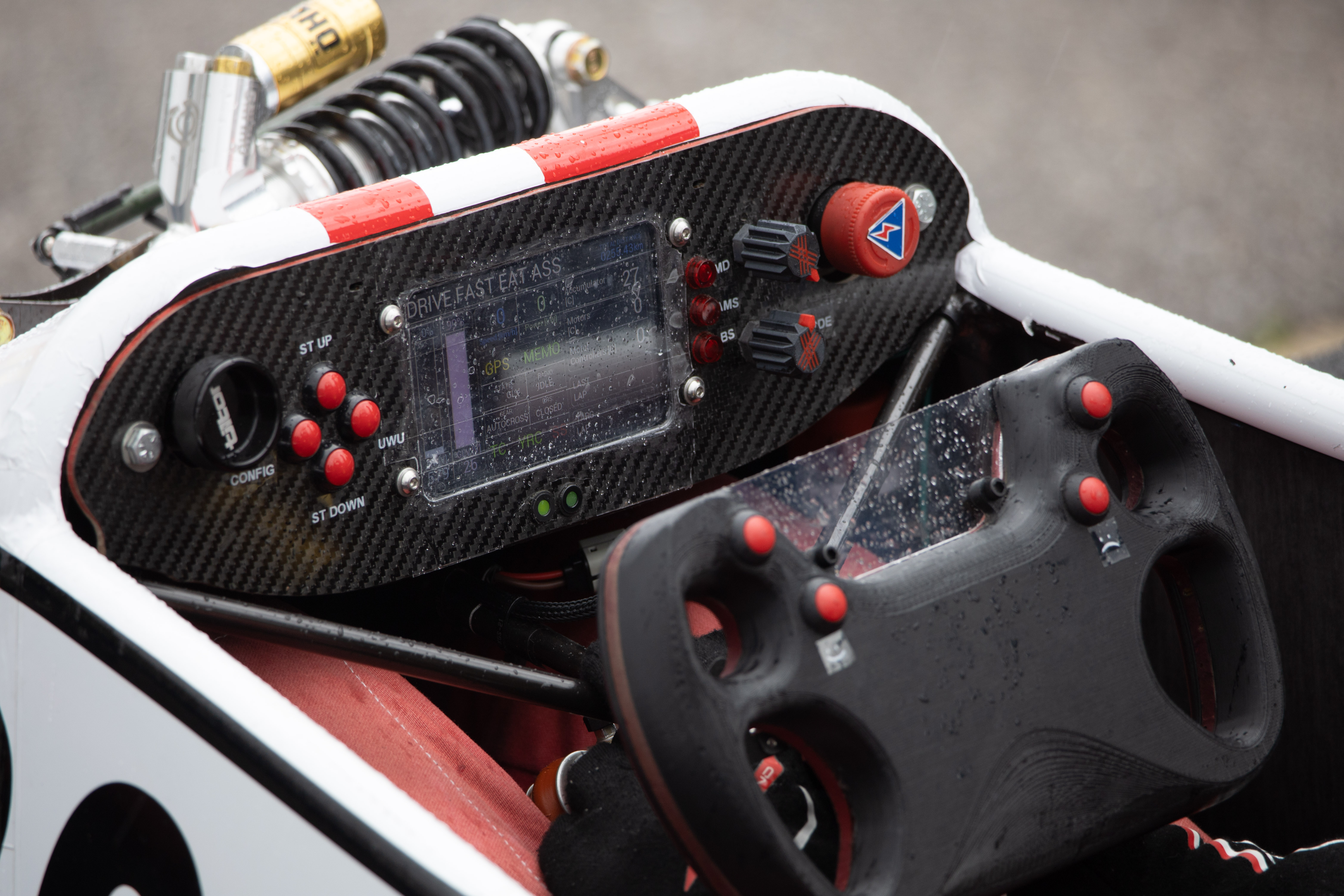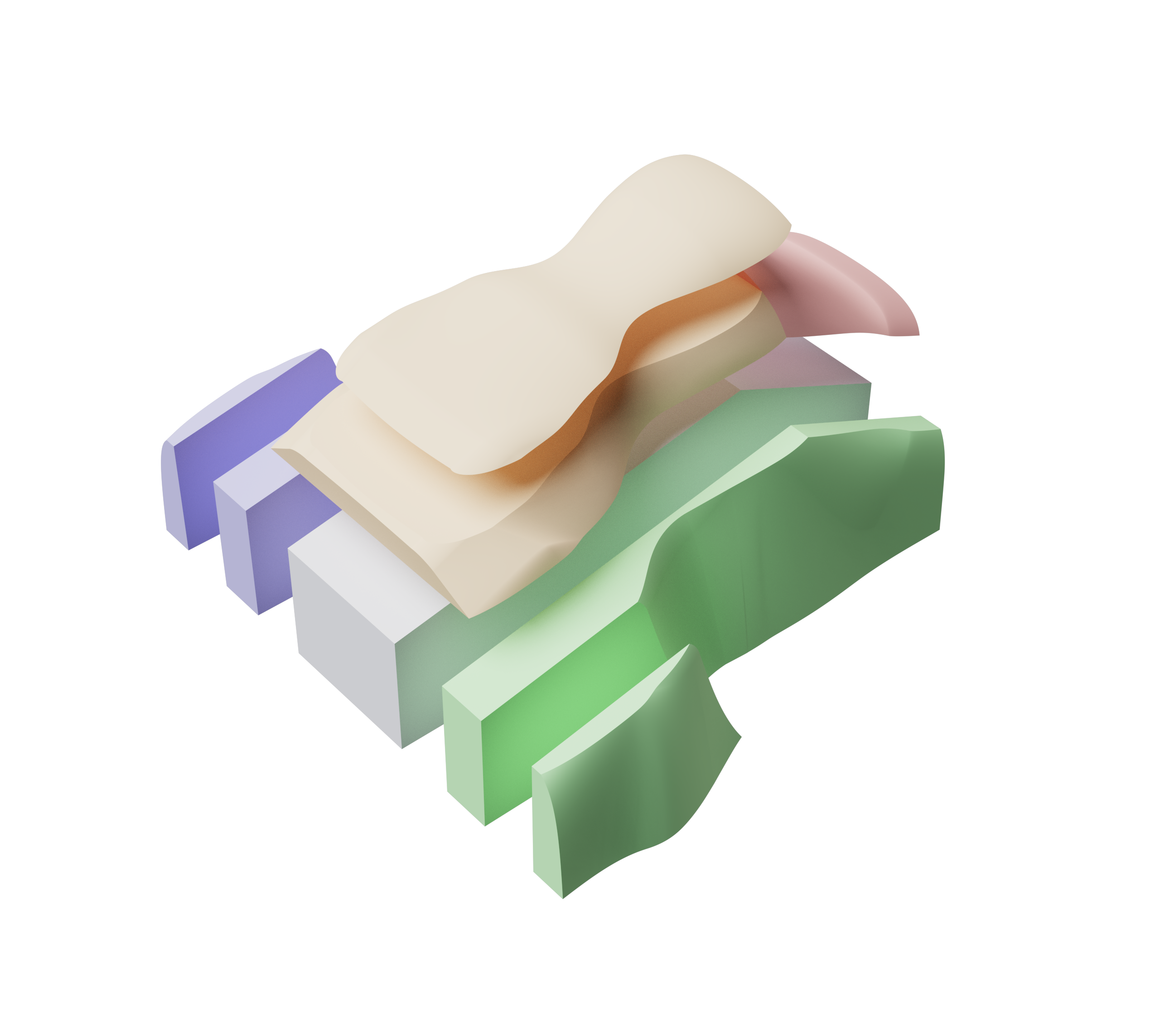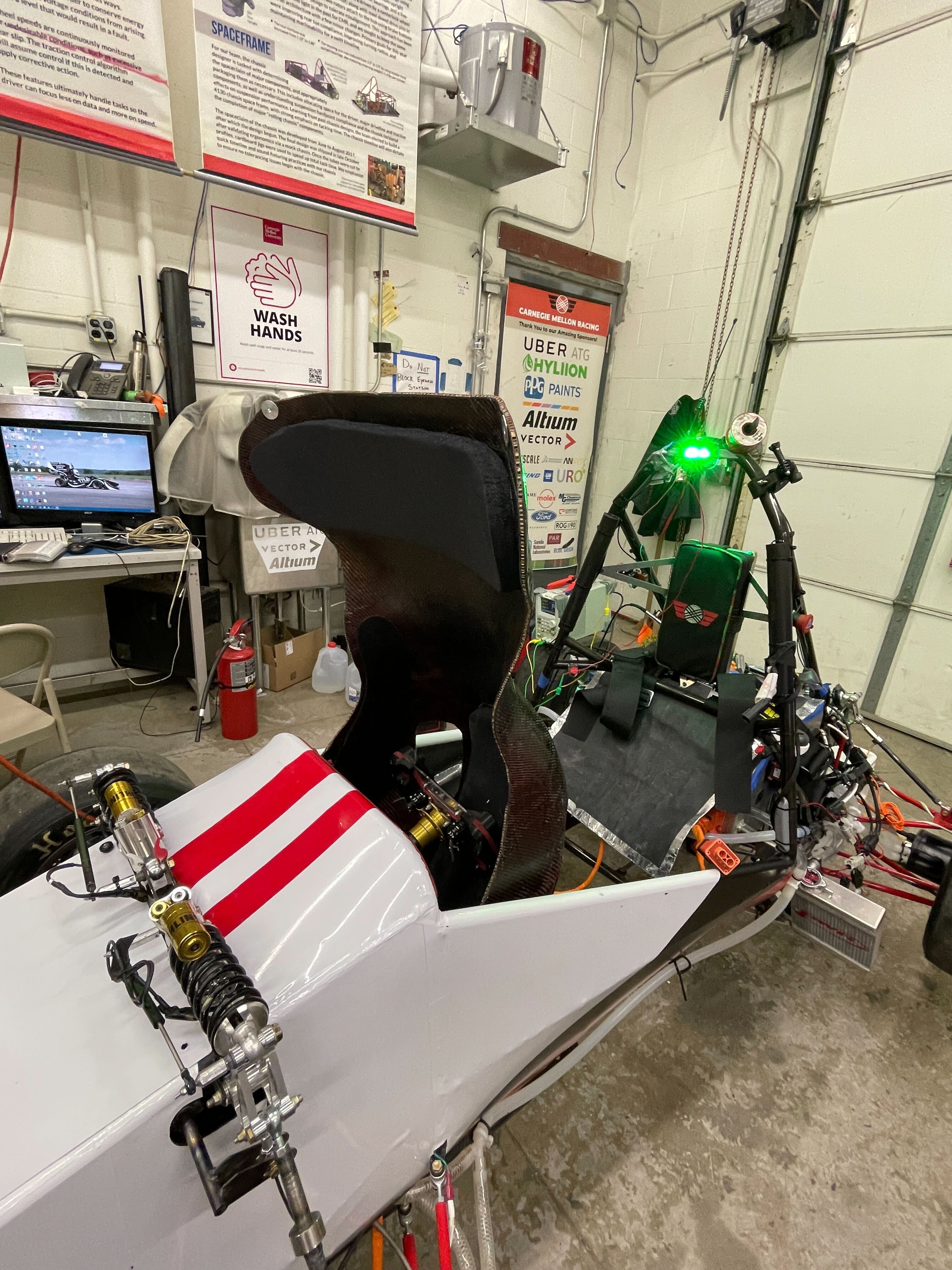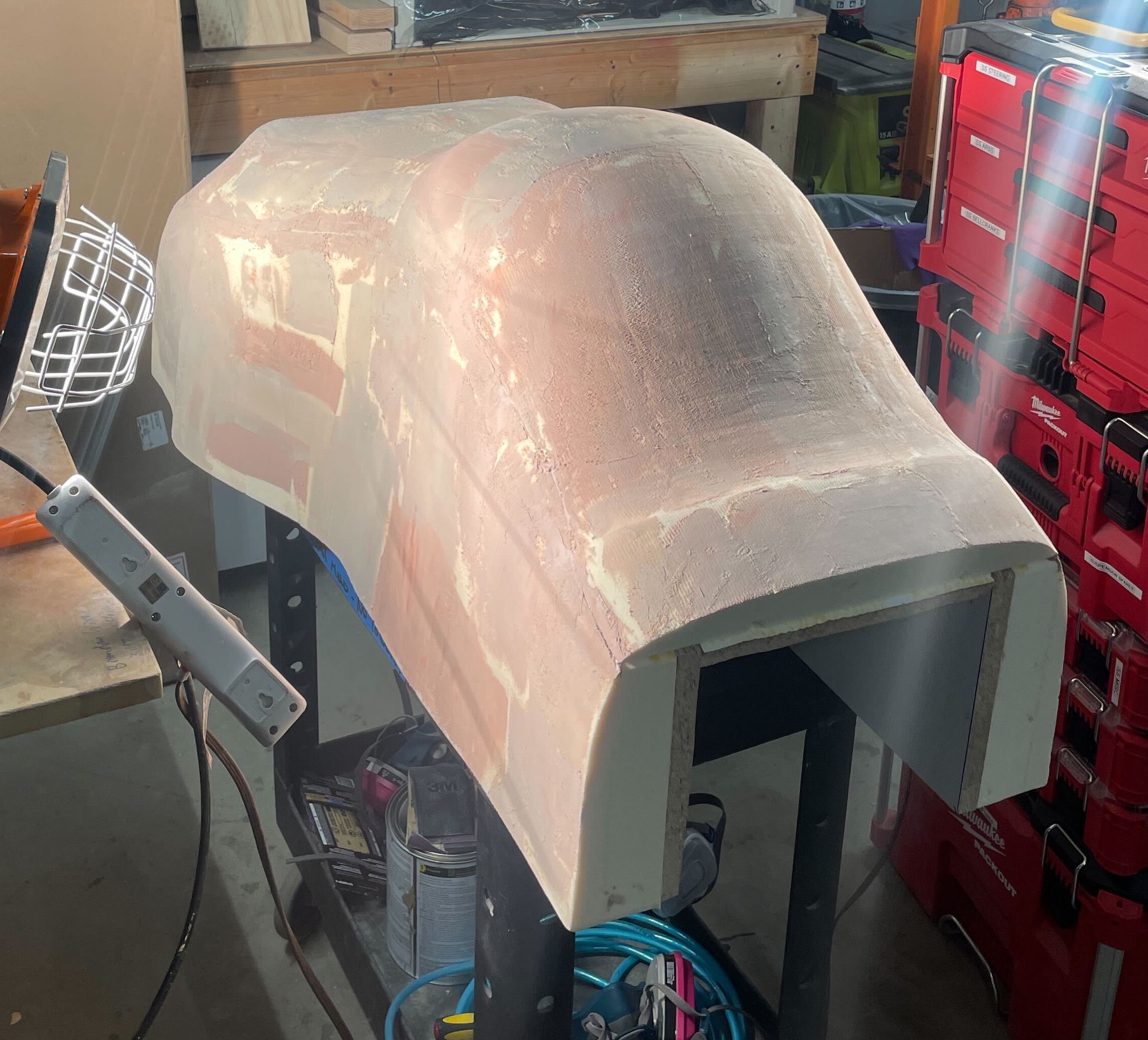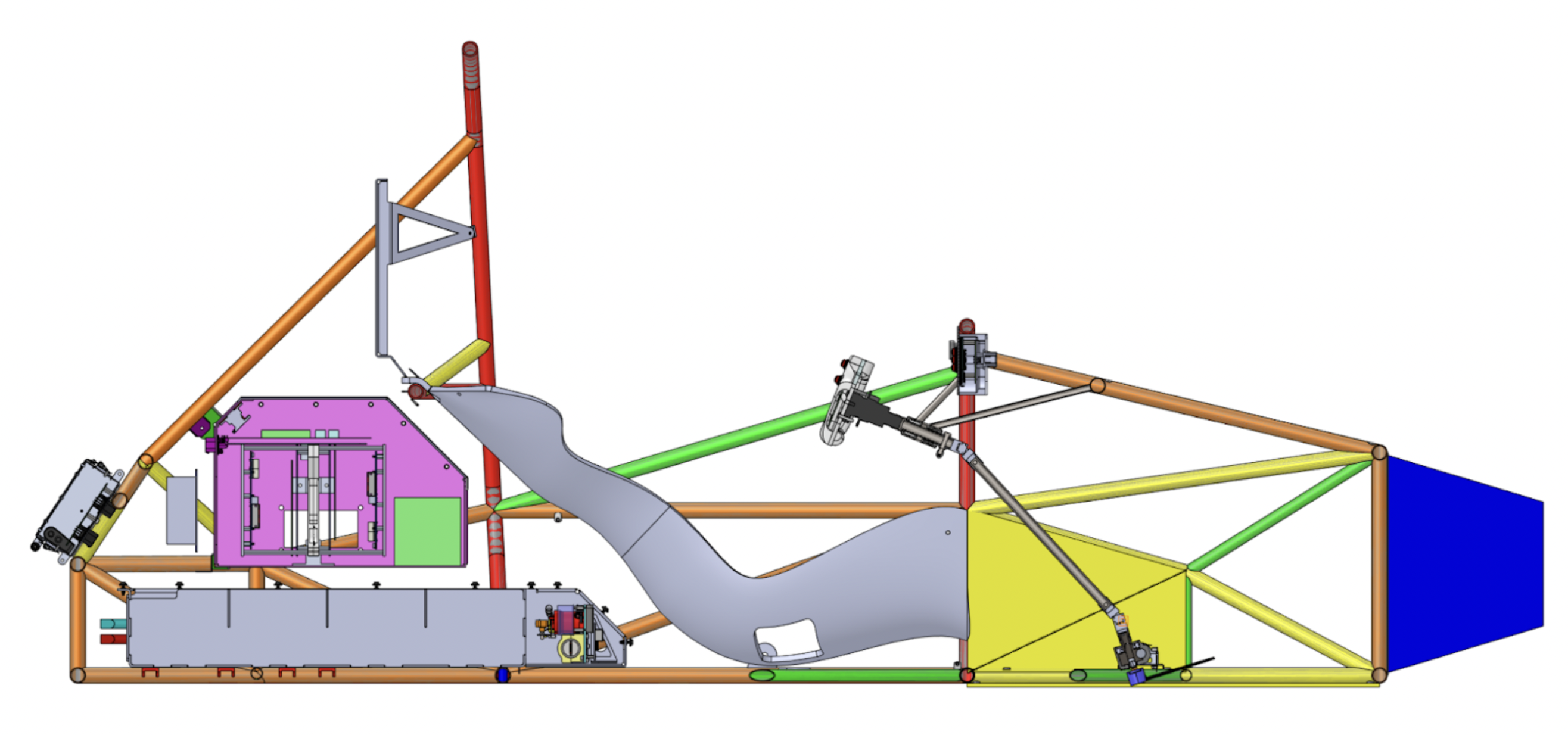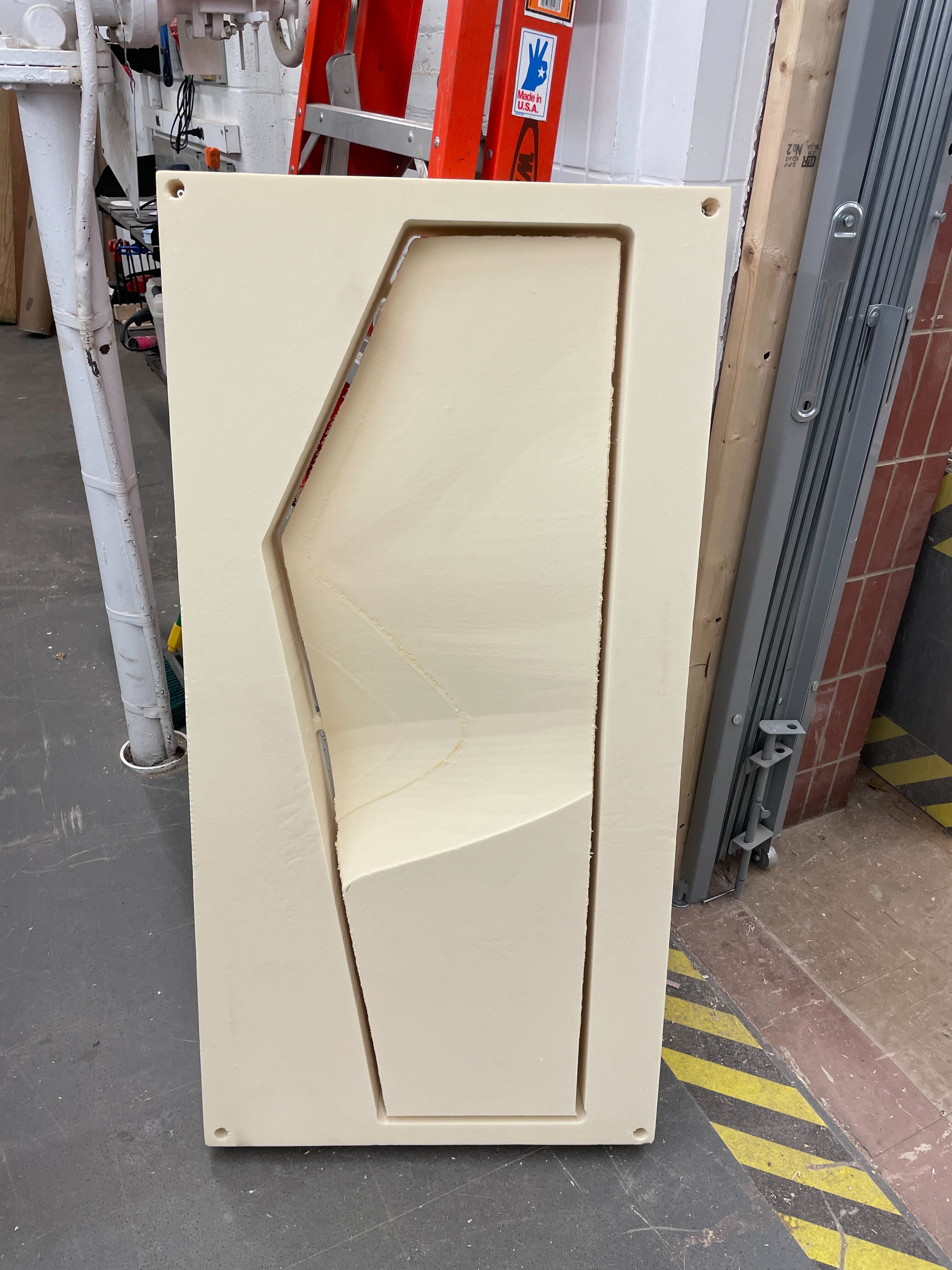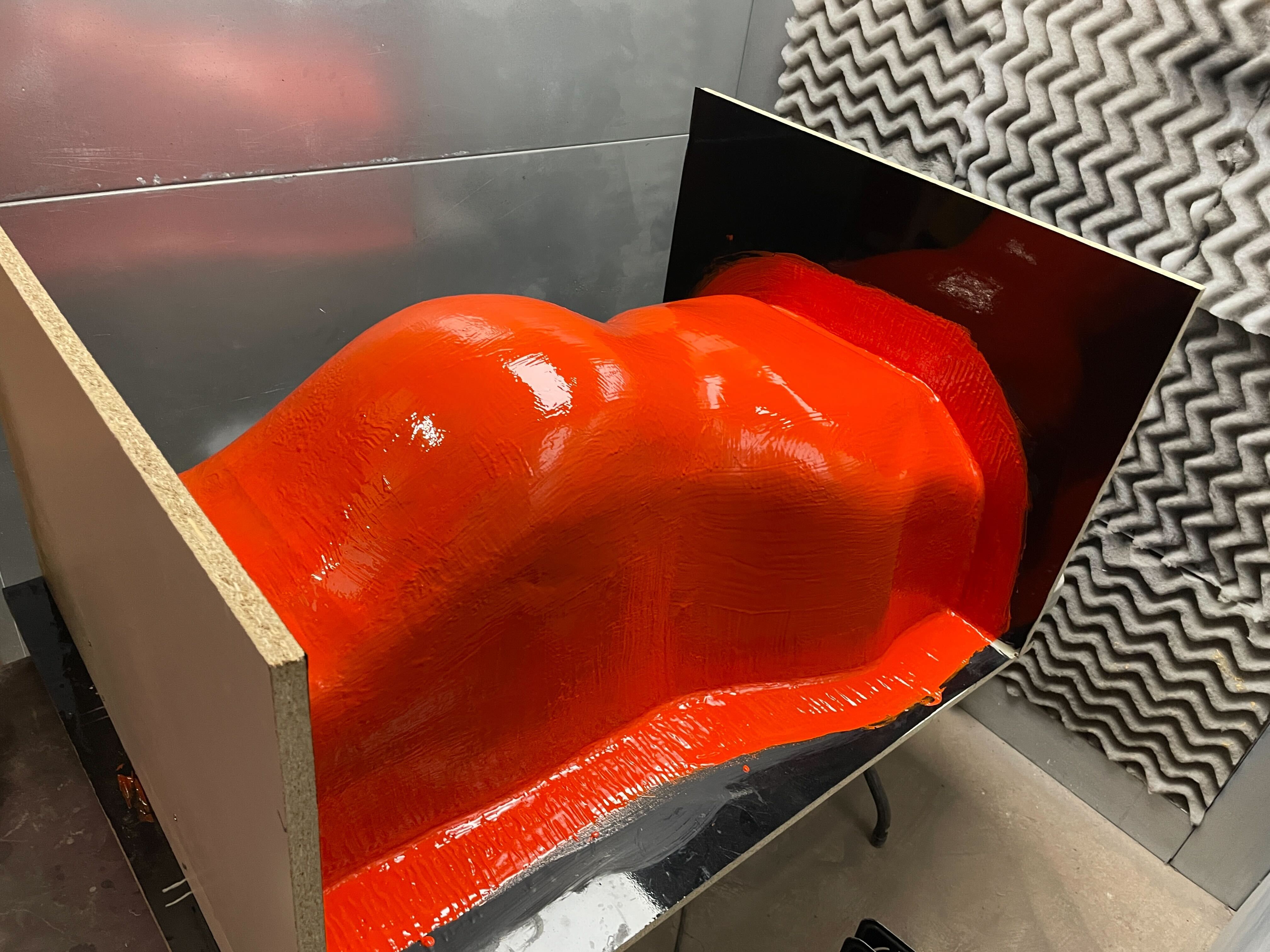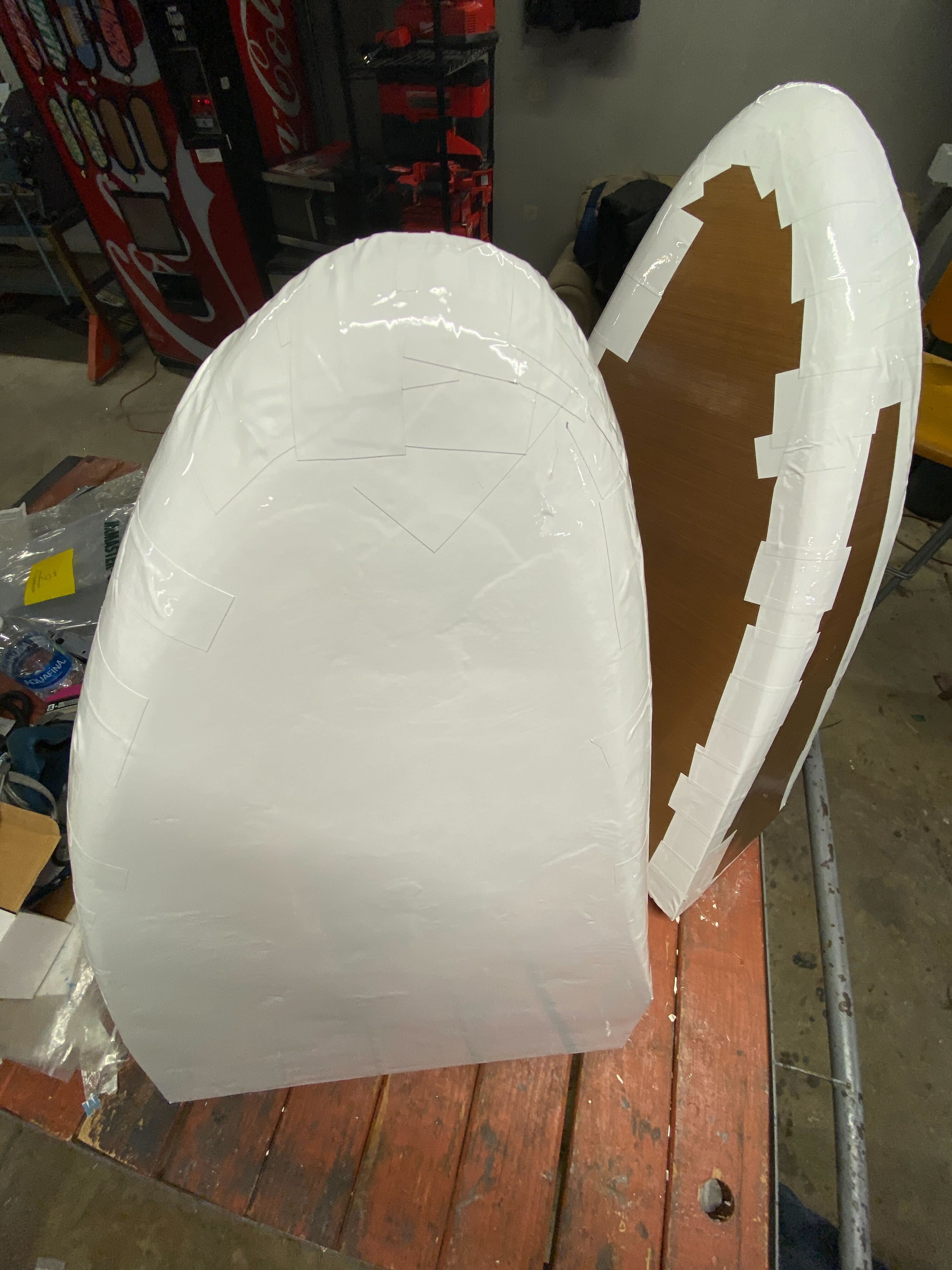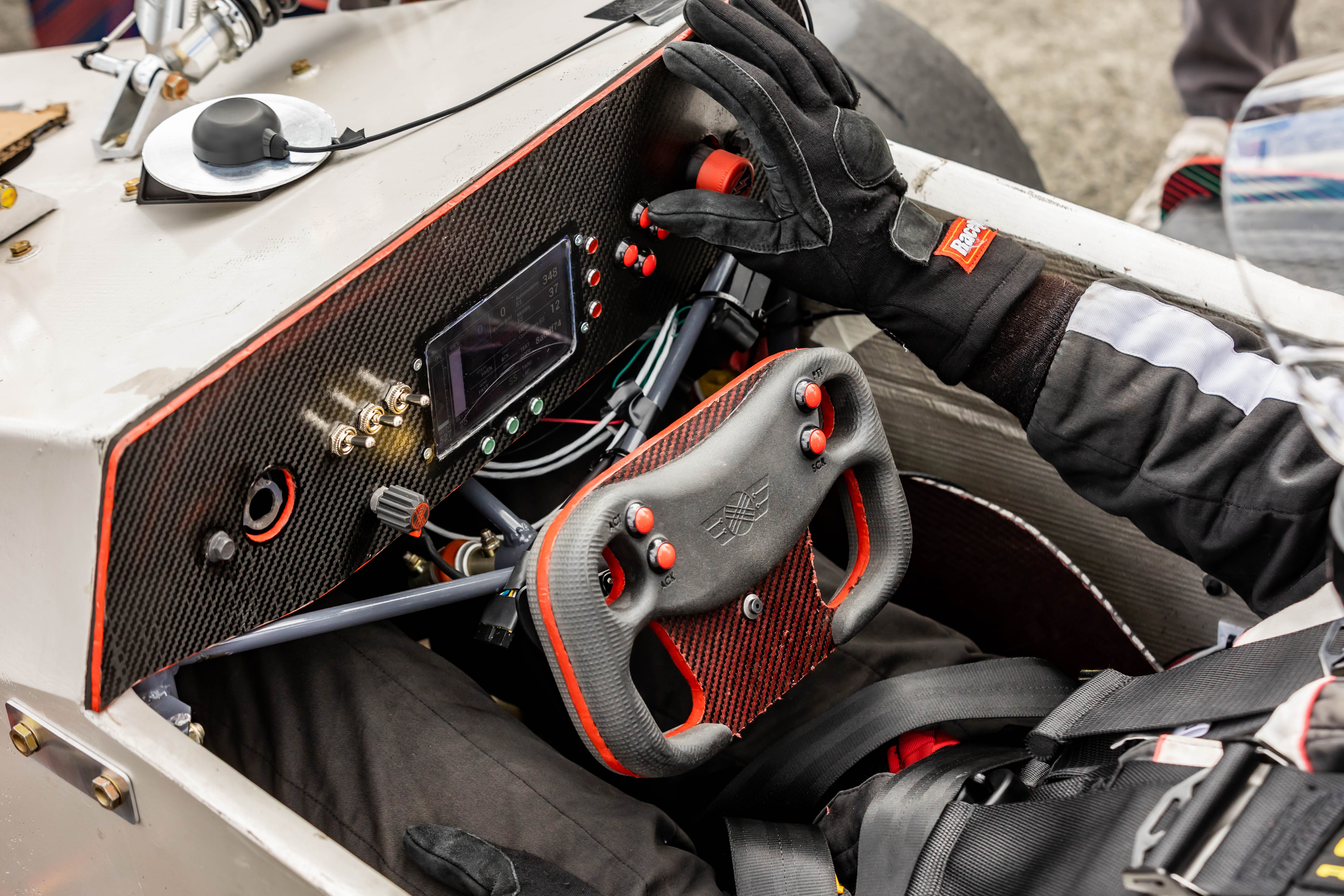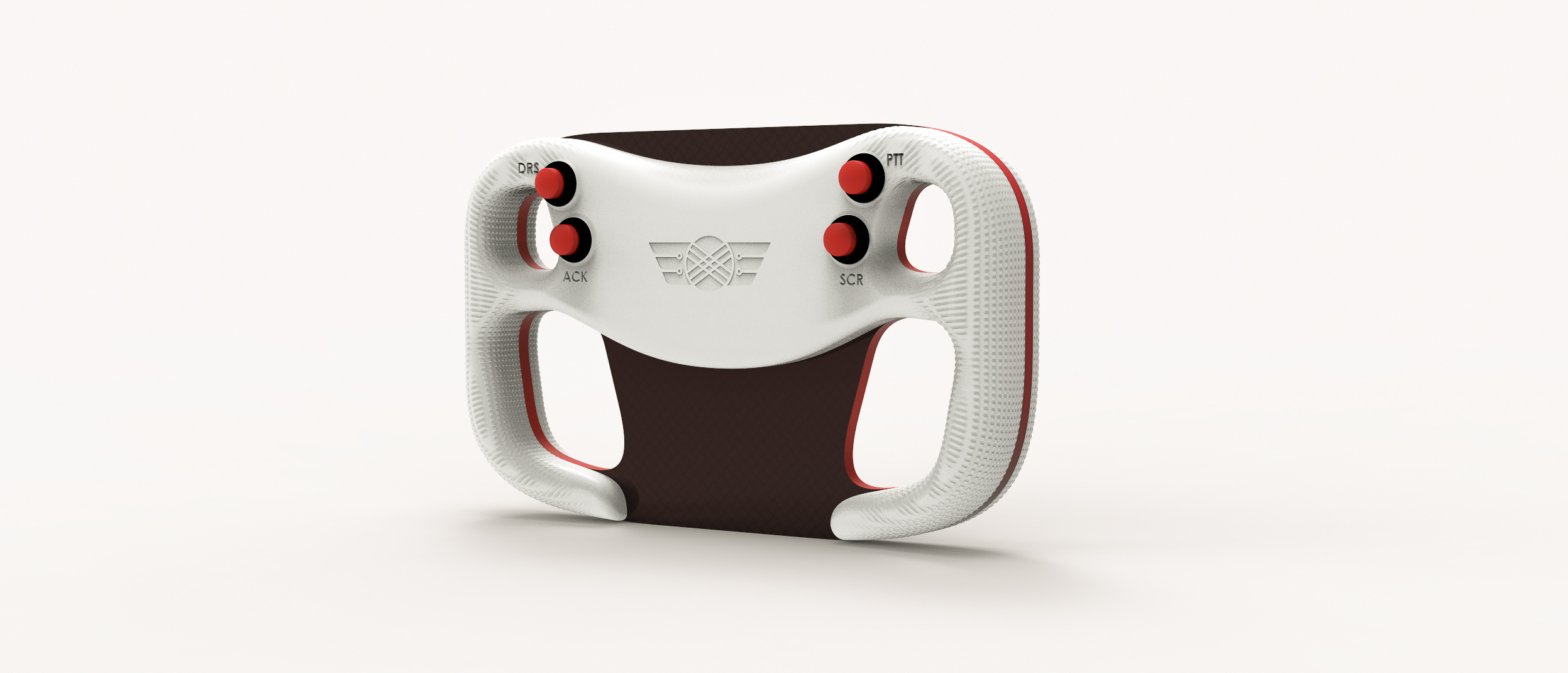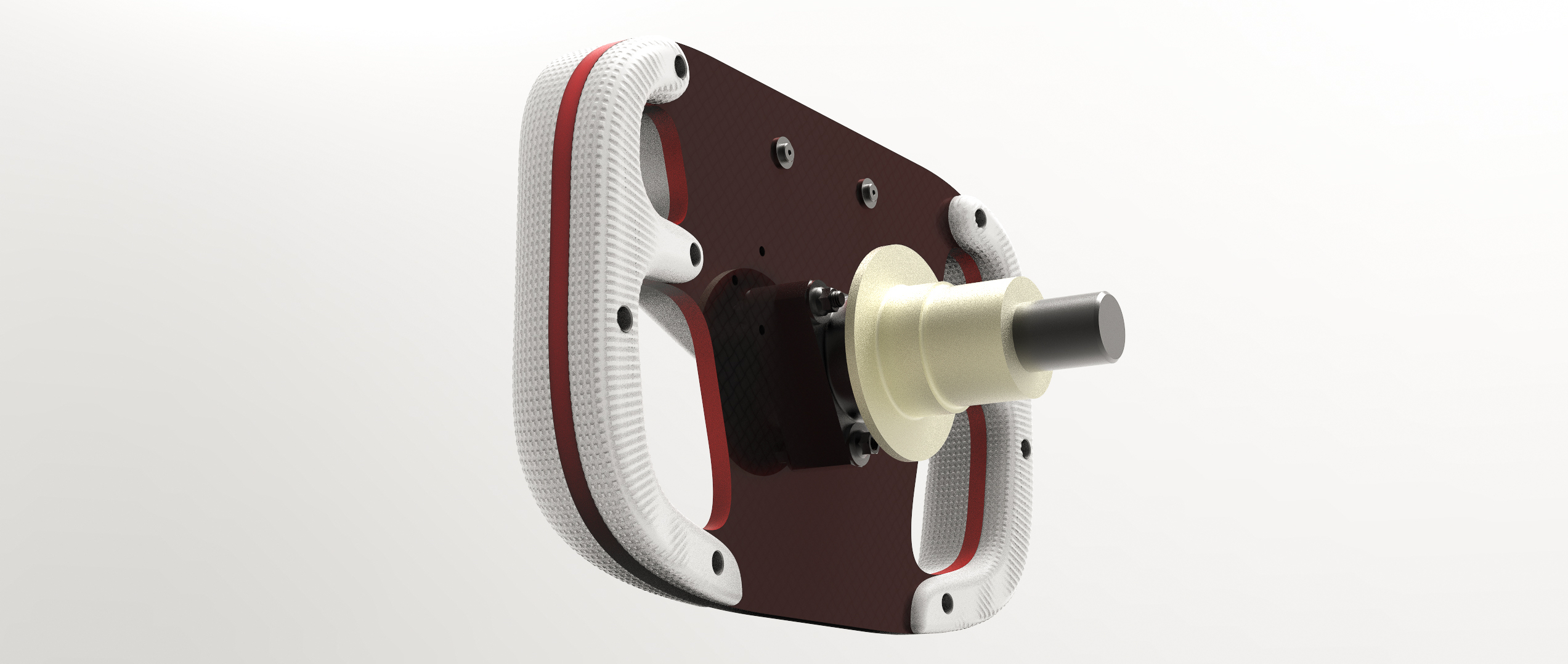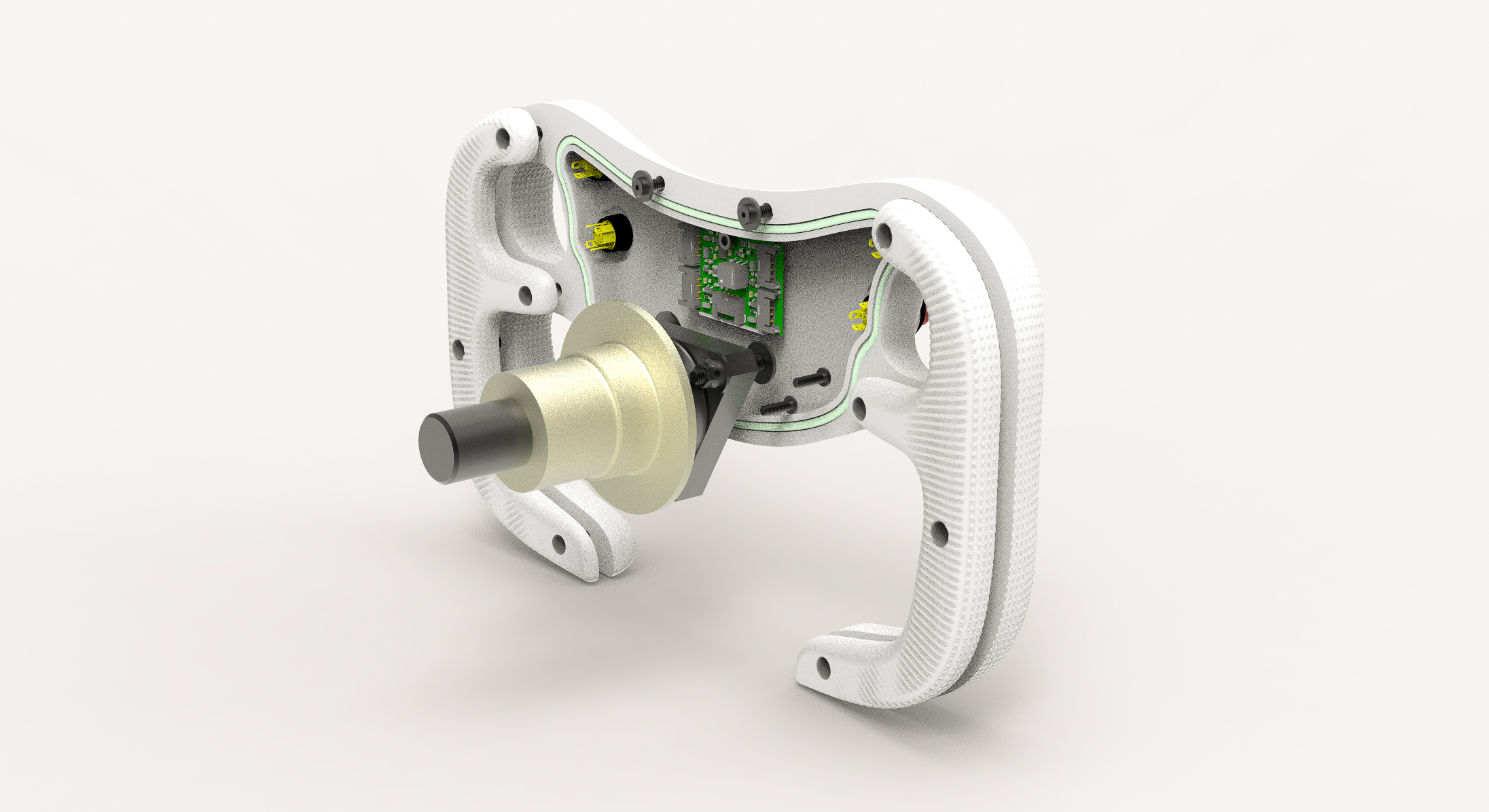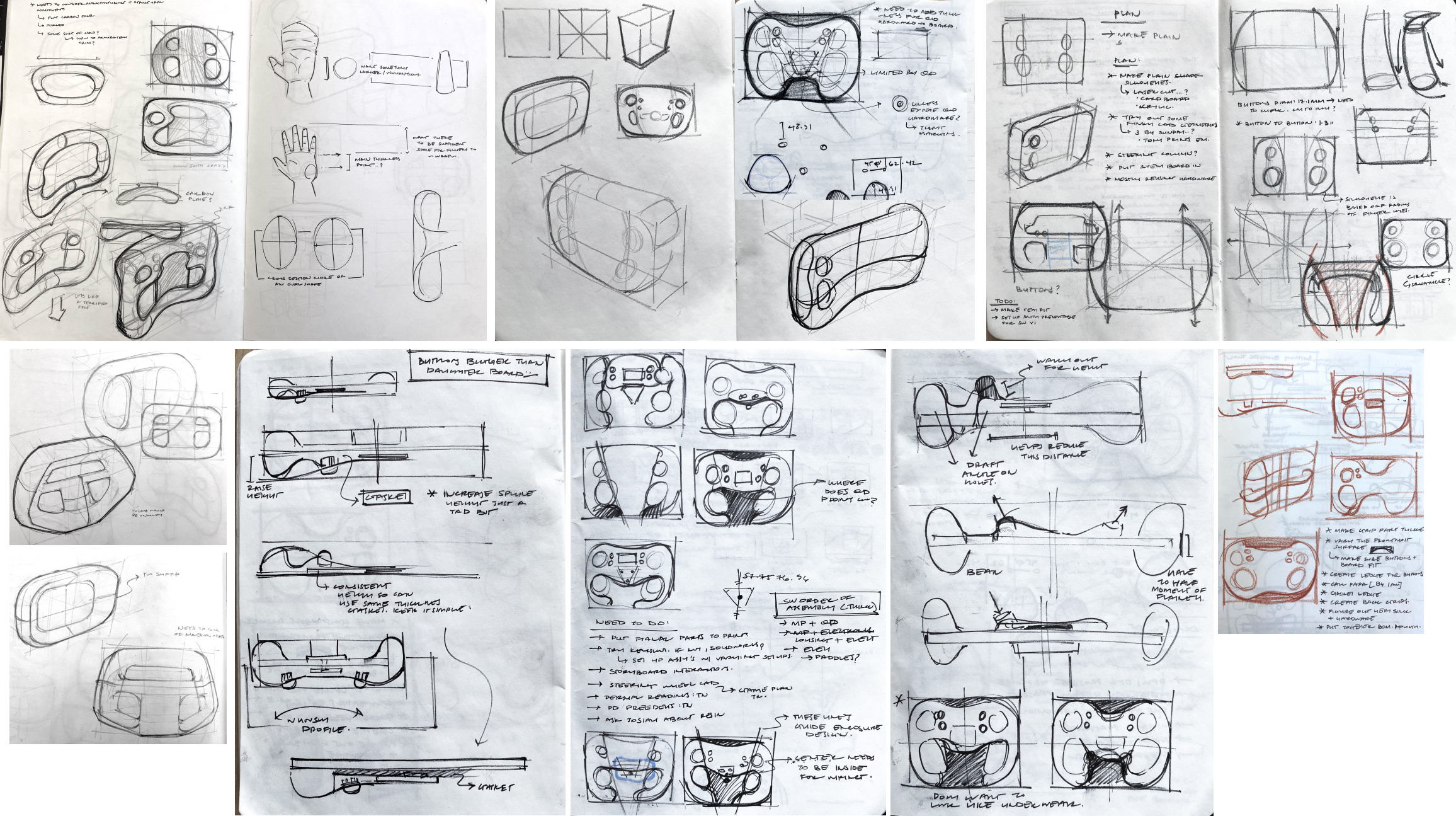Carnegie Mellon Racing
We are a team of students who design, test, and build an electric race car every year to compete with other university Formula SAE teams. This summer we came 2nd overall at the international FSAE competition.
This year, I am leading the Driver Interface subteam consisting of Pedals, Steering Wheel, Dashboard, Seat, Headrest, Harness, Impact Attenuator, Driverless Brakes, and Firewall with a focus on driver safety and comfort.
We pay attention to adjustability and accessibility of driver contact points, thoughtful redesign of systems for integration with a new monocoque chassis, and working with electrical systems for housing, and integration of components. From CAD design and quick physical prototyping, FEA analysis and collecting driver feedback, CNC milling and composite manufacturing, to assembly and fit tests, my work spans accross the full start to finish process of ideation to use.
Last year, I also helped with the special projects team on the seat and nose cone to research and develop the switch from a steel tube chassis to a carbon fiber monocoque, one of the largest architectural changes our team has undergone since switching from gas to electric.
We pay attention to adjustability and accessibility of driver contact points, thoughtful redesign of systems for integration with a new monocoque chassis, and working with electrical systems for housing, and integration of components. From CAD design and quick physical prototyping, FEA analysis and collecting driver feedback, CNC milling and composite manufacturing, to assembly and fit tests, my work spans accross the full start to finish process of ideation to use.
Last year, I also helped with the special projects team on the seat and nose cone to research and develop the switch from a steel tube chassis to a carbon fiber monocoque, one of the largest architectural changes our team has undergone since switching from gas to electric.
24e Steering Wheel
The Steering Wheel connects to the steering column via a 10 pin quick disconnect. To ensure the wheel can withstand the torque input, wec make a carbon- fiber mainplate with a solid carbon hardpoint in the center, to create the skeleton of the steering wheel. 3d printed enslosure and grips mount onto this plate to house the electronics, and ensure a comfortable experience.

Designing around the electronics, was the primary factor designing the front enclosure this year. Historically, the team has covered the entire front of the carbon mainplate. However, with an especially efficient custom daughter board going into the wheel this year (designed by another student!), I strove to design one that reflected this efficiency, while maintaining structural, functional and aesthetic integrity.
Reliable waterproofing was also a priority. In the past we have had issues with lasercutting gasket sheet, and calculating the fit and squish of that material. This year I transitioned to an o-ring for the waterproofing, a more predictable process.
Reliable waterproofing was also a priority. In the past we have had issues with lasercutting gasket sheet, and calculating the fit and squish of that material. This year I transitioned to an o-ring for the waterproofing, a more predictable process.
Getting Feedback from the drivers was a priority throughout this process. Our drivers are other students on the team— access to them was easy and something I wanted to take advantage of.
The process of designing the steering wheel began with contextualizing where it would live in the context of the rest of the car, to allow for it’s ‘spaceclaim’ to be set to avoid any interferences in the future.
Setting the baseline architecture in relation to the dashboard was also important. This was done with all possible relavant stakeholders to really figure out what controls go where, and how to make them the most acessible for their purpose, while also reducing the risk of error during use.
The process of designing the steering wheel began with contextualizing where it would live in the context of the rest of the car, to allow for it’s ‘spaceclaim’ to be set to avoid any interferences in the future.
Setting the baseline architecture in relation to the dashboard was also important. This was done with all possible relavant stakeholders to really figure out what controls go where, and how to make them the most acessible for their purpose, while also reducing the risk of error during use.
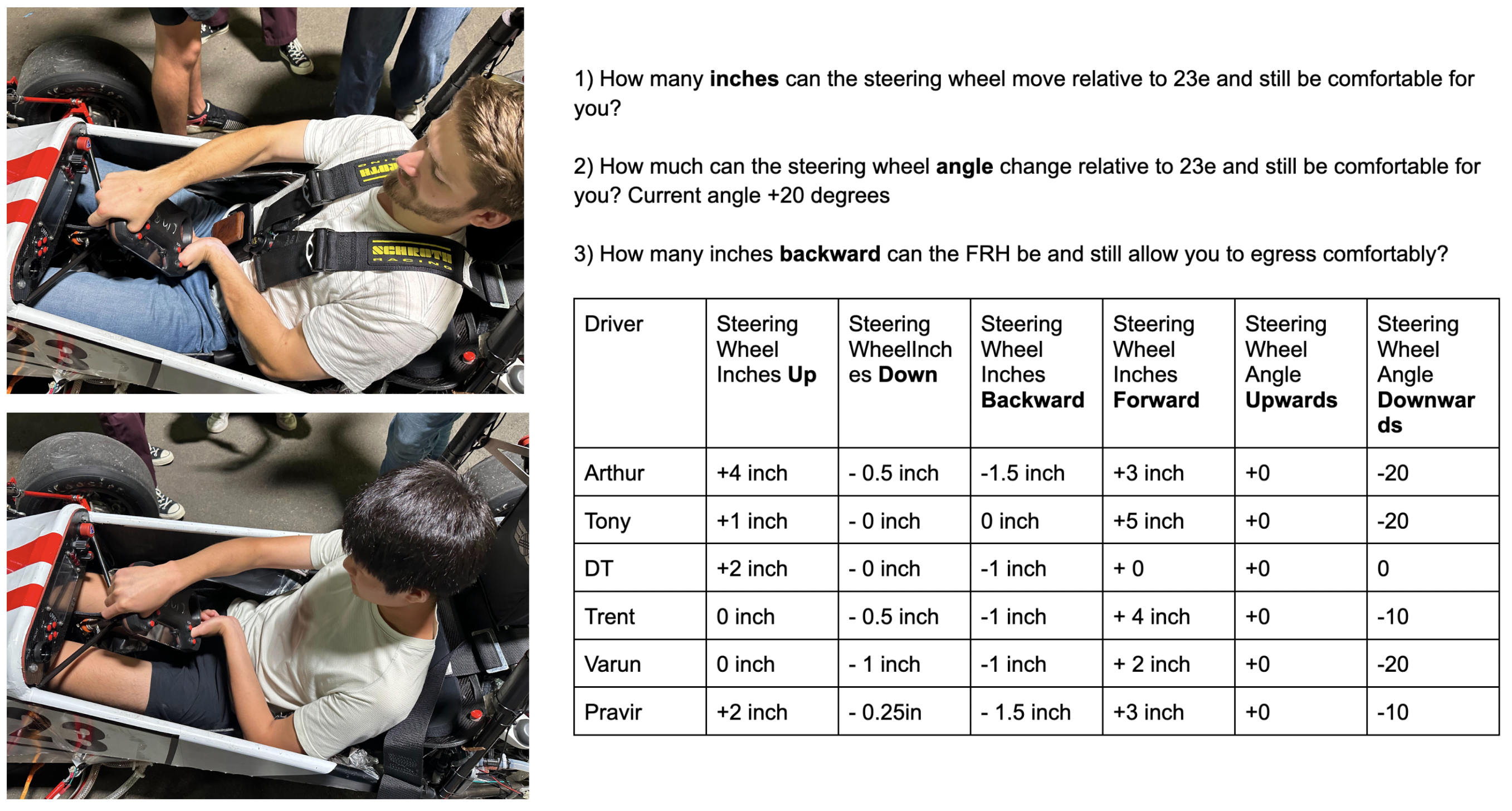
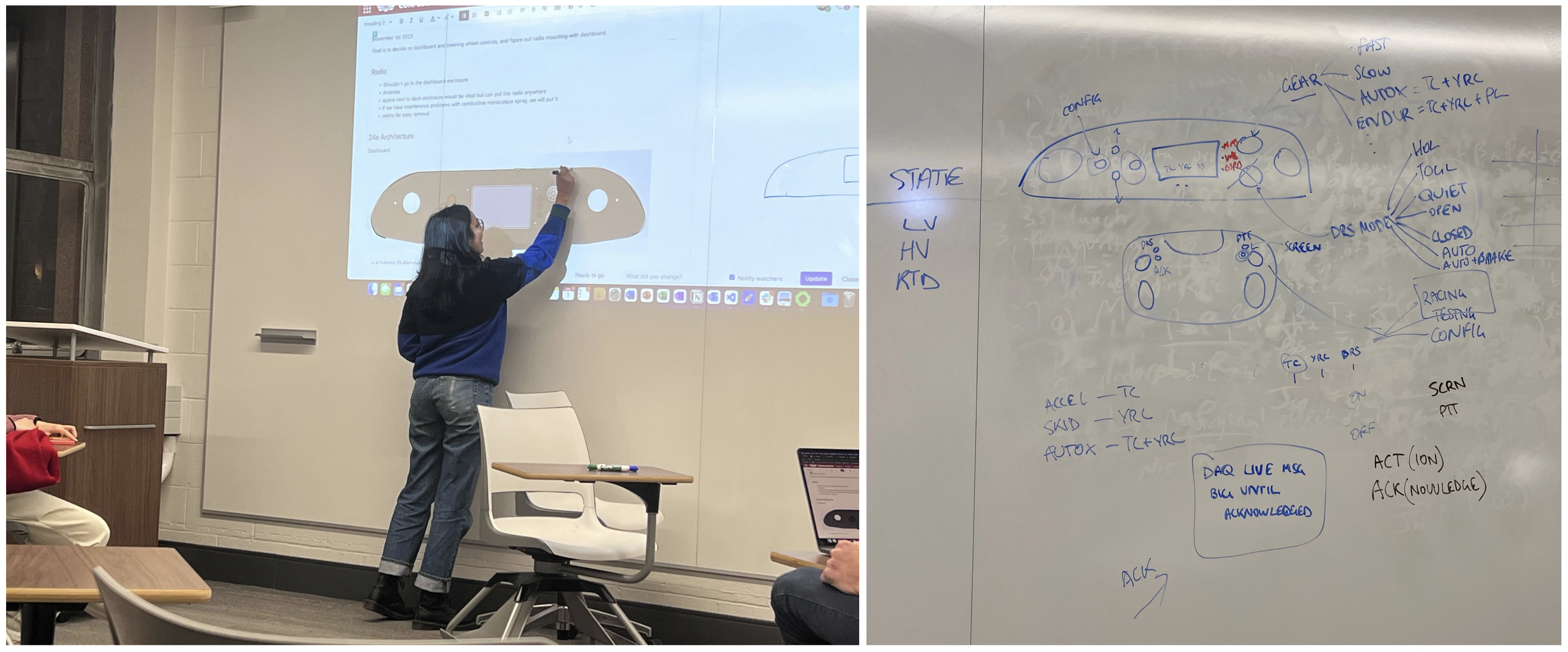
I started with foam prototypes, working up the density of material for finer finish to rough out base dimensions and positionings.
Low infill 3d prints, carboard cutouts all stuck together with tape worked really well to further develop in relation to CAD. Questions like “how does the top button reach feel”, and “what are pain points when you’re at a full turn” helped get more nuance feedback for refinement.
Low infill 3d prints, carboard cutouts all stuck together with tape worked really well to further develop in relation to CAD. Questions like “how does the top button reach feel”, and “what are pain points when you’re at a full turn” helped get more nuance feedback for refinement.
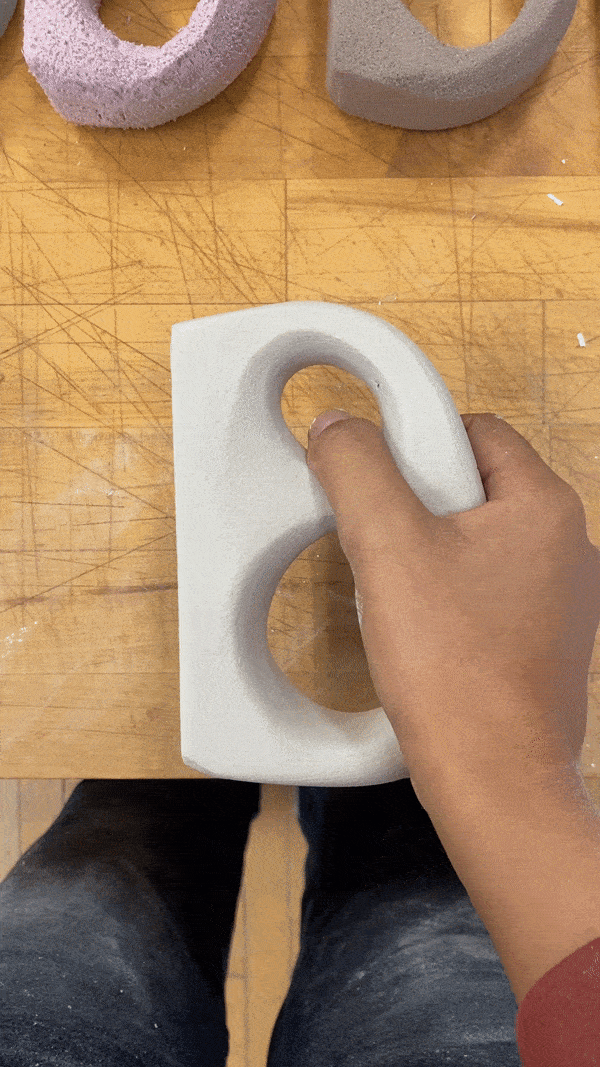
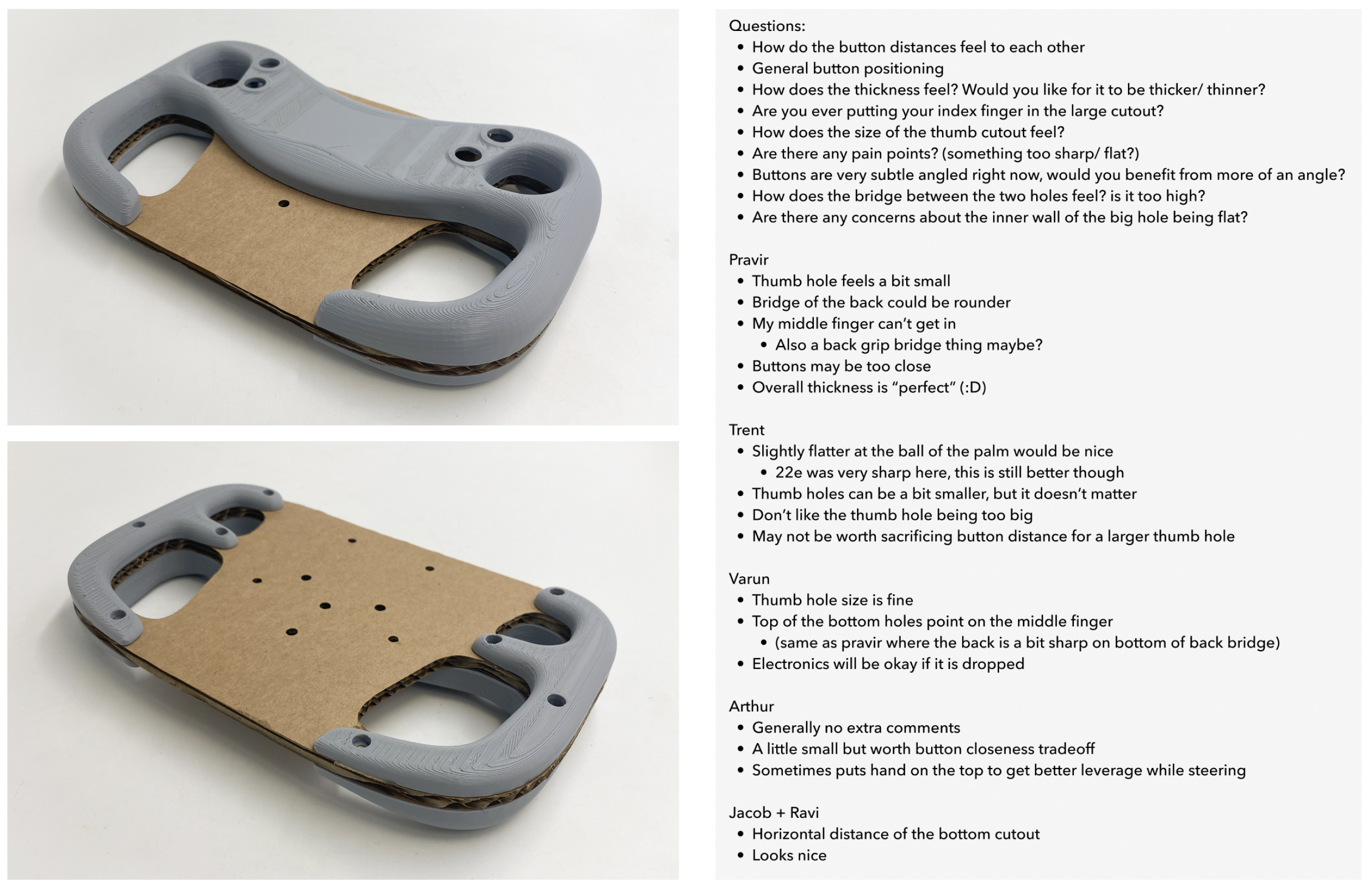
Designing around the rules for the FSAE competition, and with respect to driver positioning and visibility was also critical.

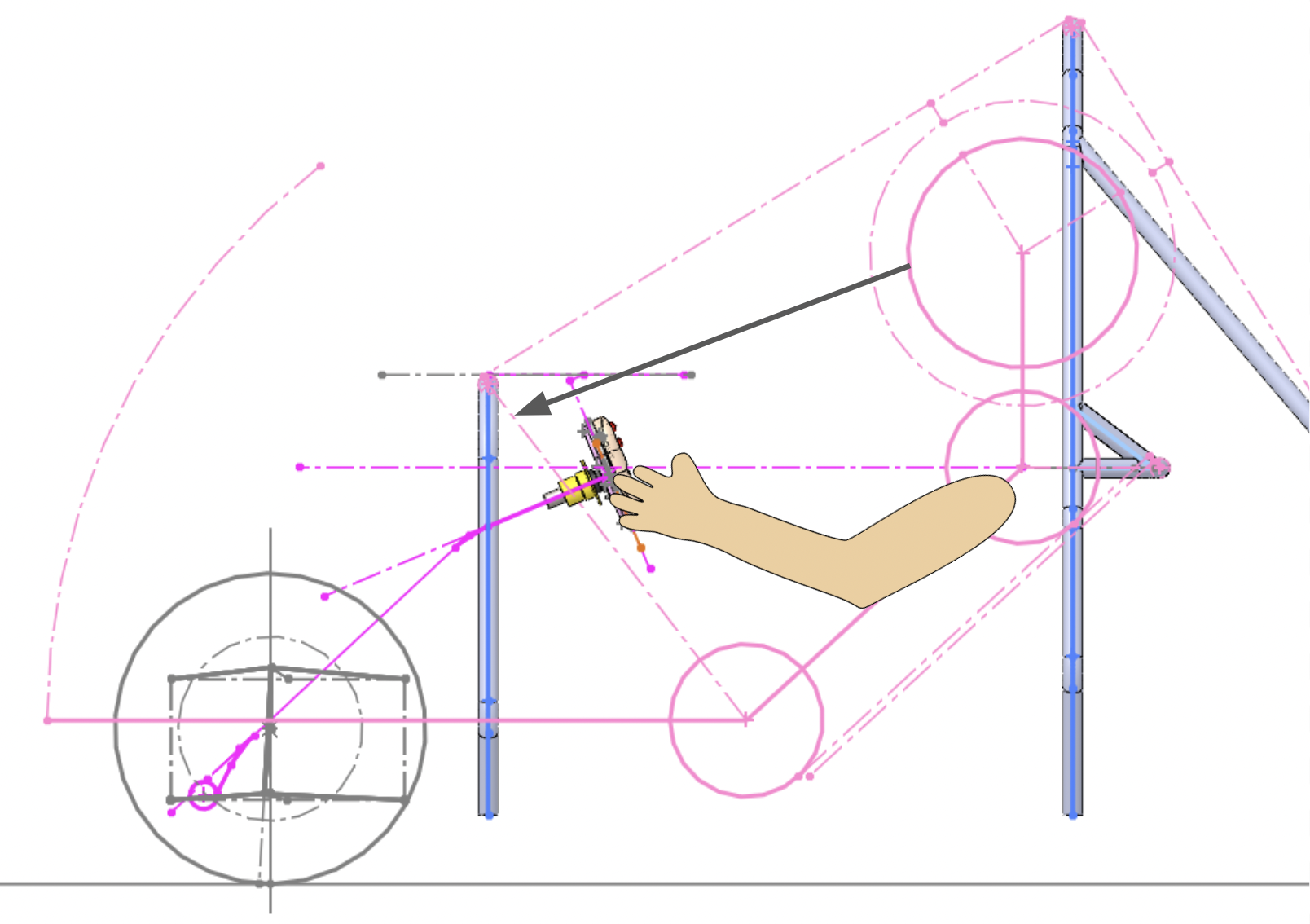
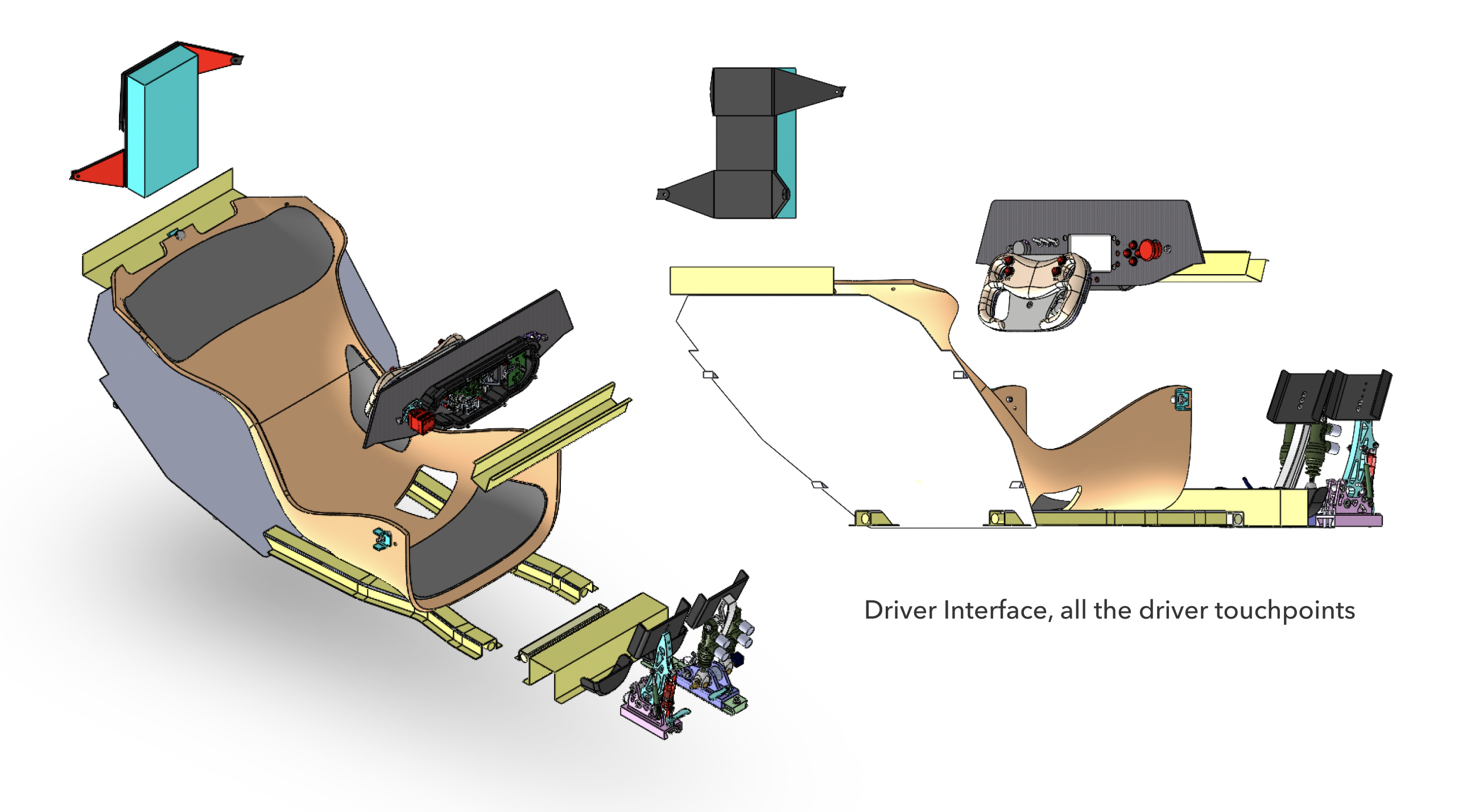
Manufacturing process
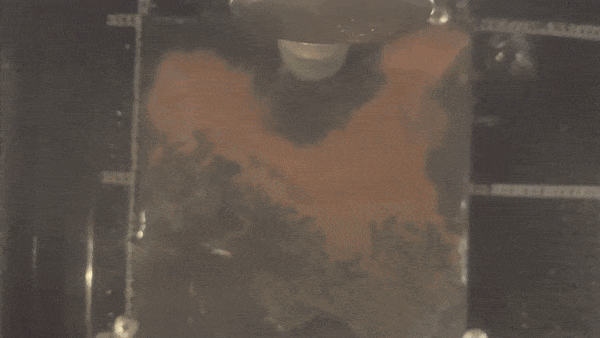
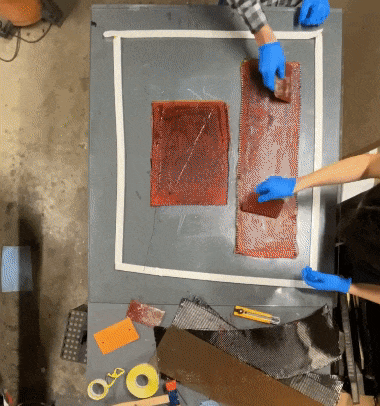

A clear steering wheel was something I deeply considered to create more interest in the wheel. However, we decided against this due to manufacturing, fragility, and aesthetic concerns.
Resin prints are brittle, and prone to shattering if dropped— a risk not worth taking with a steering wheel that ge
ts taken in and out of the car every time a driver gets in or out. The material also tends to turn yellow in the sun and stain easily.
A clear filament on a fdm printer was an option for a semi-clear enclosure, but the distraction of somewhat, but not fully being able to see wiring and other things in the enclosure was a concern. The form of the wheel reflects simplicity and efficiency, it wouldn’t make sense to clutter it with a distractive finish.
At the end, one of our sponsors printing MJF parts for us was able to print the enlosure and grips for us. This allows for a much finer texture to the wheel that allows for the geometry to show in a more refined form, not as affected by layer lines that FDM would produce.
Resin prints are brittle, and prone to shattering if dropped— a risk not worth taking with a steering wheel that ge
ts taken in and out of the car every time a driver gets in or out. The material also tends to turn yellow in the sun and stain easily.
A clear filament on a fdm printer was an option for a semi-clear enclosure, but the distraction of somewhat, but not fully being able to see wiring and other things in the enclosure was a concern. The form of the wheel reflects simplicity and efficiency, it wouldn’t make sense to clutter it with a distractive finish.
At the end, one of our sponsors printing MJF parts for us was able to print the enlosure and grips for us. This allows for a much finer texture to the wheel that allows for the geometry to show in a more refined form, not as affected by layer lines that FDM would produce.
Some other Driver Interface systems!
These are also still in progress.
My role as Driver Interface captain involves overseeing these projects. During the design phase, I help ideate possibilities, teach and provide input on analysis and iteration methodologies, and coordinate between systems with a focus on the big picture—for example, understanding how a pedal angle affects how a driver sits in the seat.
These are also still in progress.
My role as Driver Interface captain involves overseeing these projects. During the design phase, I help ideate possibilities, teach and provide input on analysis and iteration methodologies, and coordinate between systems with a focus on the big picture—for example, understanding how a pedal angle affects how a driver sits in the seat.
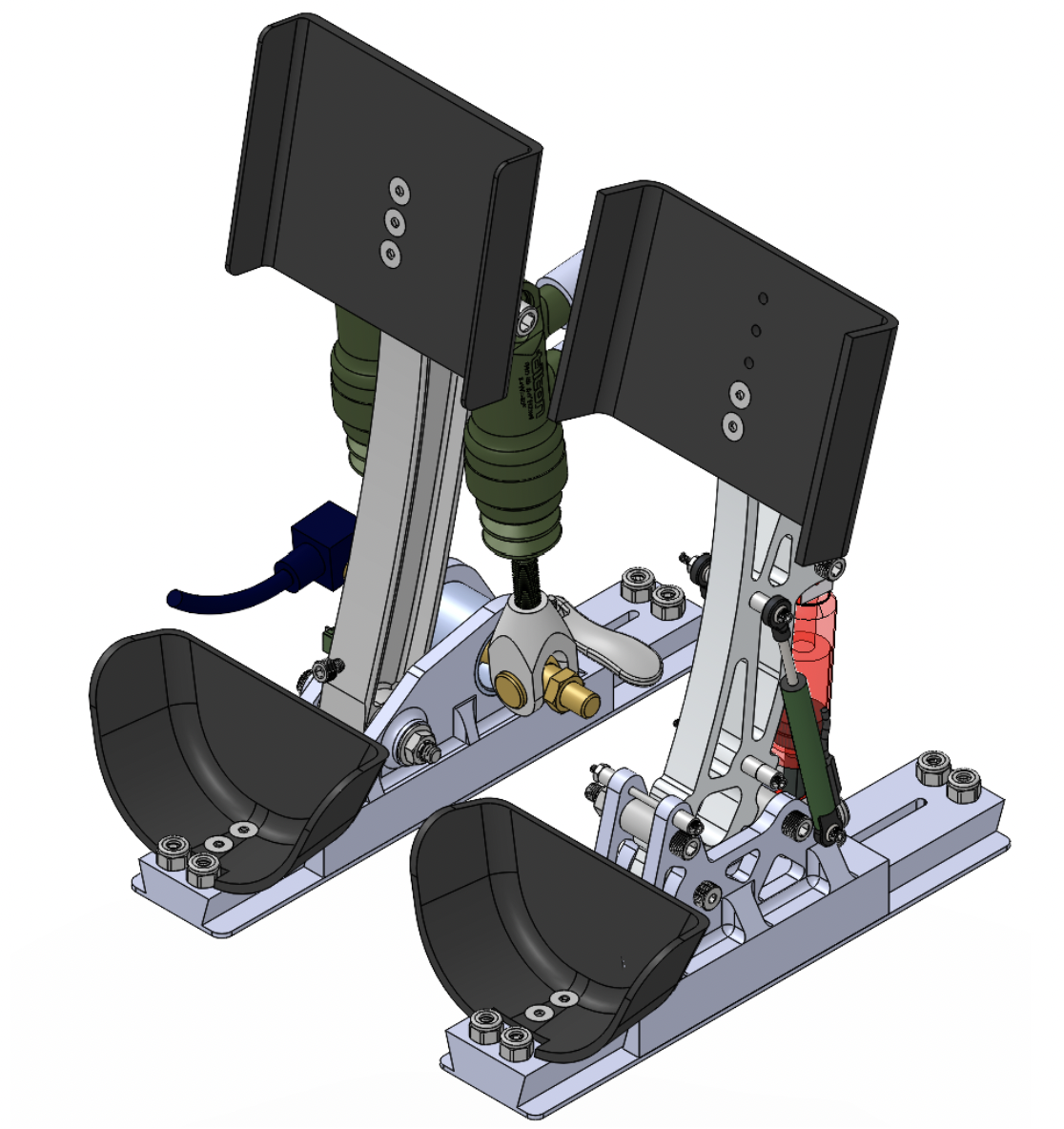
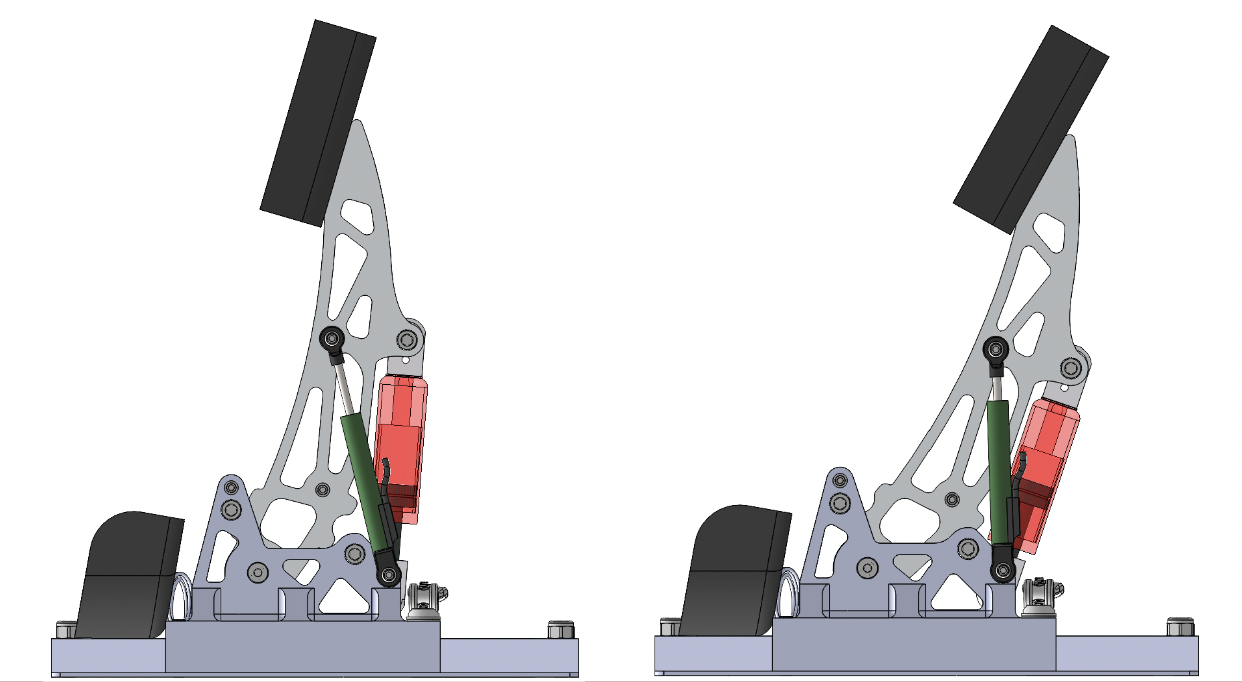

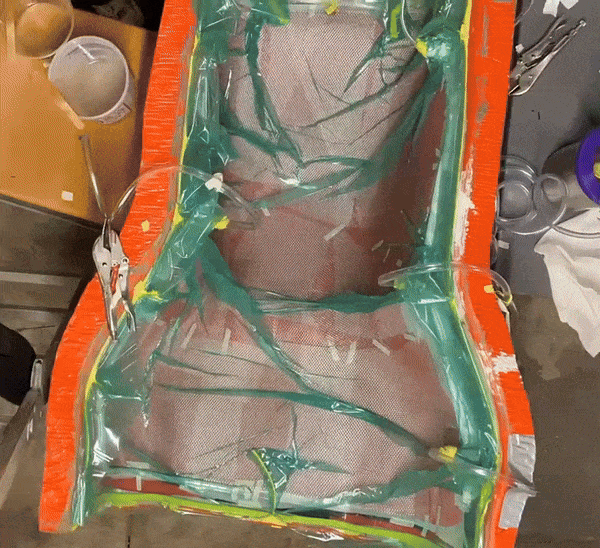

Some stuff I worked on for last year’s car, 23e
